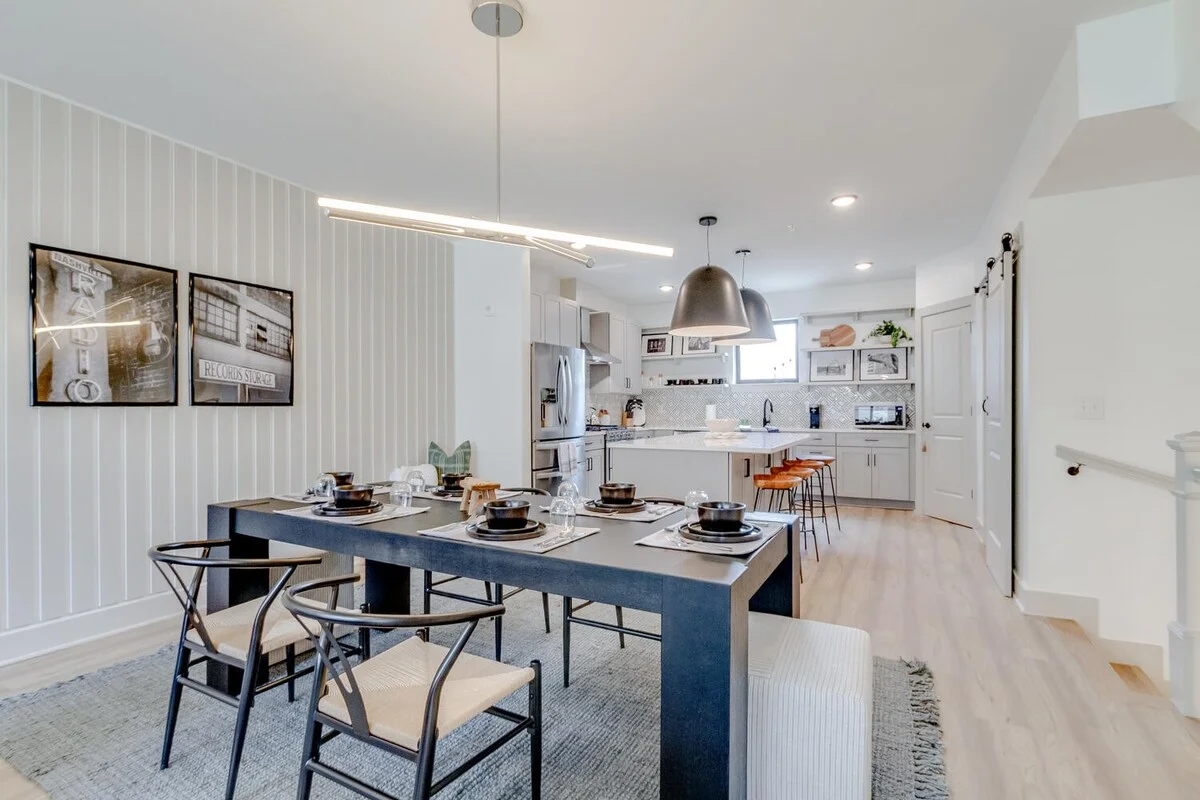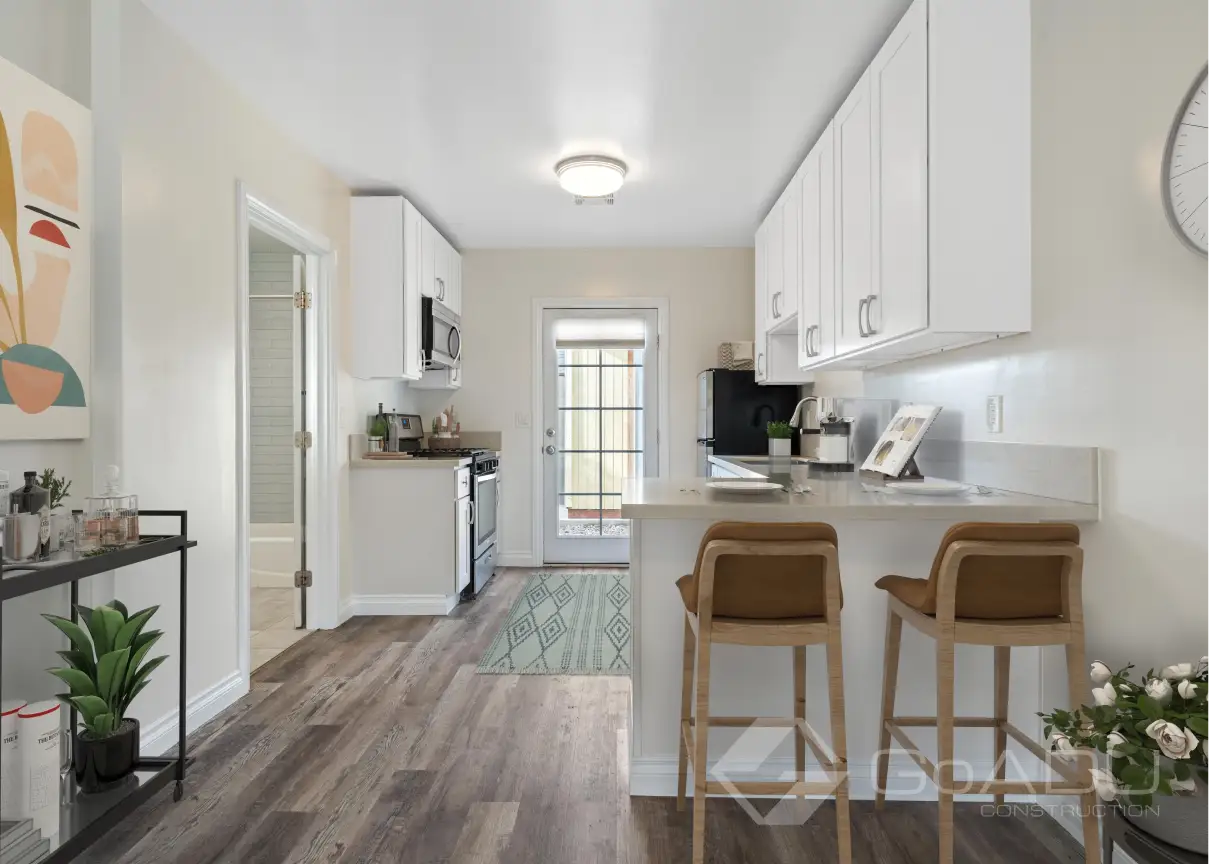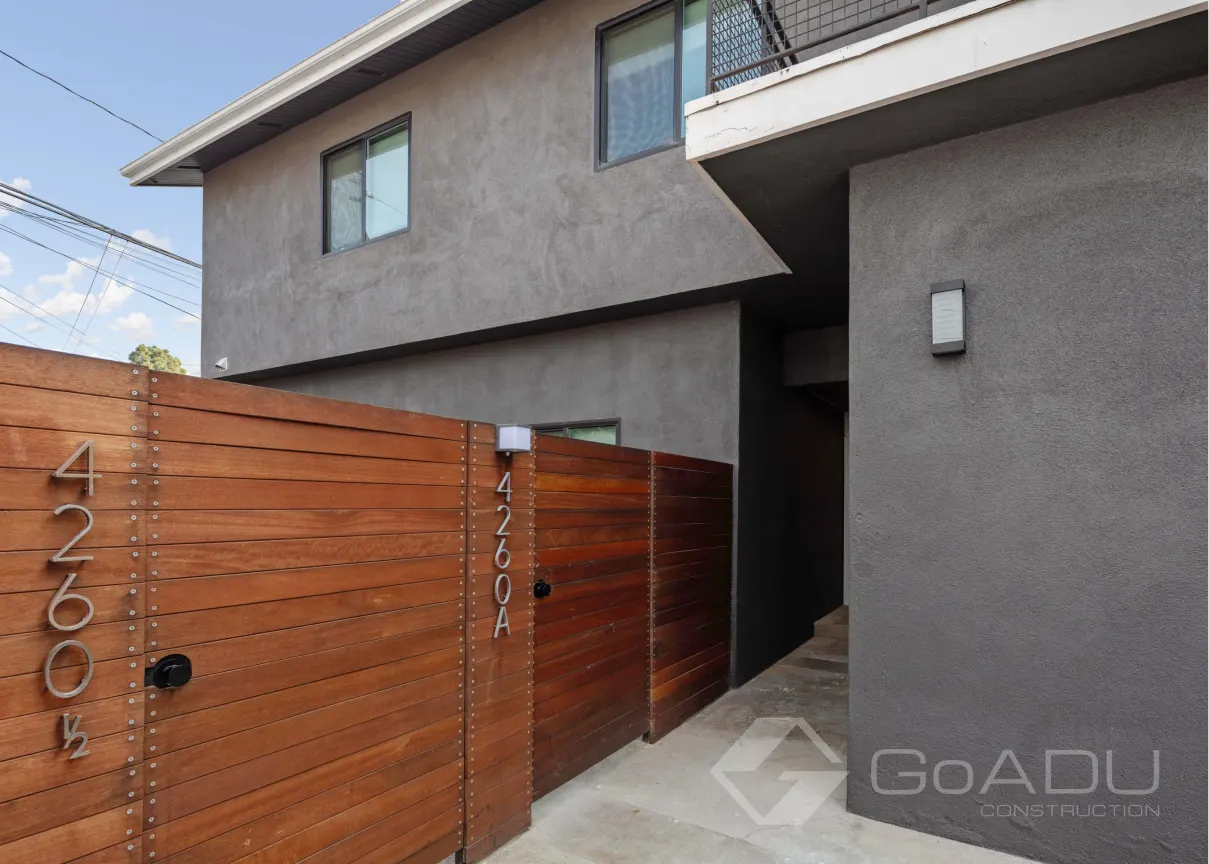Discover what you can build in the City of Long Beach. This city guide covers essential Custom Home regulations and zoning laws to help you navigate the process and make informed decisions for your property.
Long Beach homeowners must adhere to California state laws that limit single-family homes to one attached Custom Home and one detached Custom Home per property, for a total of two Homes.
Multifamily property in Long Beach can be permitted for up to two detached Homes. Owners can convert existing unlivable space into at least one Custom Home, with more Homes up to a number of 25% of the existing units. Therefore, an 8-unit building can have up to two conversion Homes built on the property; four units, up to one.

A detached Custom Home can be a maximum of 1,200 square feet in Long Beach, or up to 60% of the size of the main dwelling unit, whichever is smaller.
In Long Beach, an attached Homes can be up to 50% of the existing living area of the main dwelling unit.
The maximum footprint of a detached Custom Home can be a maximum of 1,200 square feet in Long Beach, or up to 60% of the size of the main dwelling unit, whichever is smaller.
In Long Beach, detached Homes typically can’t exceed 25 feet in height. However, there can be variations based on your property’s zoning district, potentially limiting your Custom Home to as little as 16 feet of height.
Two-story Homes can be permitted in Long Beach, but they must follow height requirements. Some districts are zoned for as little as 16 feet of maximum height. 16 feet is usually too low for two-story buildings, which typically require at least 18 feet. However, if your zoning allows higher Homes, it will be easier to permit a two-story Custom Home.
Yes, you can build “stacked” detached Homes — two stories with one separate Custom Home on each floor. Keep in mind that single-family property can only be permitted for one detached Custom Home, so stacked Homes are not possible. Since you can build up to two detached Homes on multi-family property, two stacked Homes may be permitted on multifamily property.
Yes, you can attach two Homes to each other in one detached structure in Long Beach, but only on multifamily property. This is because only one detached Custom Home is allowed on single-family property, but up to two are allowed on multifamily property.
No, a JCustom Home is defined as a small Custom Home converted from existing space within the main structure of the primary dwelling unit. As such, it cannot be attached to A Custom Home.
Generally roof decks would be permitted on A Custom Home, but must meet the height restrictions for the zone. Roof decks cannot encroach into the required setbacks. As a rule of thumb, railings and access staircases above 42″ need to be included in height calculations.
Long Beach makes no mention of specific requirements for the exterior of the Custom Home. However, general guidance is that the exterior roofing, trim, walls, windows and the color palette of the Custom Home shall incorporate the same features as the primary dwelling unit.

A detached Custom Home in Long Beach requires a minimum four-foot side and rear setback. Front setbacks depend on your specific neighborhood and street.
A detached Custom Home in Long Beach requires a minimum six feet of separation from any existing structure.
No specific rule prohibits a front-yard Custom Home in Long Beach, but it is not typical. It must meet all front setback and building separation requirements, and it must not run afoul of any neighborhood rules. Even then, special review and approval may be required from the permitting authority.
While you can get the application documents and schedule appointments online, the Long Beach Community Development division requires that plans be submitted in person.
California building codes say you need a soils report if your Custom Home project involves:
The Long Beach Community Development division might ask for a soils report even if your project doesn’t fit those exact situations.
For new Homes in single-family residential zones, you need 40% of your front yard to be landscaped. This is called the “Landscaped Area Ratio.” All permeable surfaces count toward this, including but not limited to:
You can’t use turf or artificial grass for more than 20% of your front yard landscaping.
Since front-yard Homes are rare, this is rarely an issue.
To start the plan check process, you’ll need to submit your Custom Home plans to the city’s Development Services Department. This usually means going online to their website or visiting their office. You’ll likely need to pay a fee when you submit your plans, but this varies.
The length of the plan check depends. It can take anywhere from a few weeks to a few months to get your plans approved as they move from one department to the next. This can depend on how busy the city is, if your plans have any issues, and how many corrections you may have to make.
Long Beach requires that you add one new parking space to your property per Custom Home. However, several exemptions have been put in place to make it easier to add A Custom Home. You need not add parking when any of the following apply:
If more parking must be added, it can be placed within the required setbacks. Tandem parking is allowed, unless otherwise restricted by special rules.

A new Custom Home in Long Beach will often require solar panels. However, if the Custom Home is smaller than 500 square feet, it may be exempt. Factors like the amount of sun the site receives may also qualify the Custom Home for an exemption.
No, a separate electric and water meter is not required for A Custom Home. However, you may request one from the city.
Not necessarily. A Custom Home can be permitted under the existing address. If you want your Custom Home to have its own address, you can apply to the Mapping and Property Management Division (MPM) for a “½” address designation. In other words, if your address is 1234 Elm Street, your Custom Home could have a separate address of “1234½ Elm Street.”
Low Impact Development (LID) is an approach to land development or redevelopment that seeks to preserve and conserve onsite water quality and natural features, with minimal detrimental effect to local waterways and ecosystems. The City of Long Beach may require LID fees for Homes of 750 square feet or more.
Operating A Custom Home as an Airbnb or short-term rental is prohibited by the City of Long Beach.
Generally, rent control in Long Beach applies to housing built before February 1, 1995. But Homes are sometimes an exception. If your Custom Home was permitted after January 1, 2005, it might not be covered under the city’s rent control rules. This is true even if your main house was built before 1995.
You can use gas appliances in A Custom Home in the City of Long Beach as long as all building codes, safety standards, and installation guidelines are adhered to. The proper permits must be obtained, and requirements for safety and ventilation observed.
You are not required to put fire sprinklers in your Custom Home if the main dwelling unit is not required by law to have fire sprinklers.